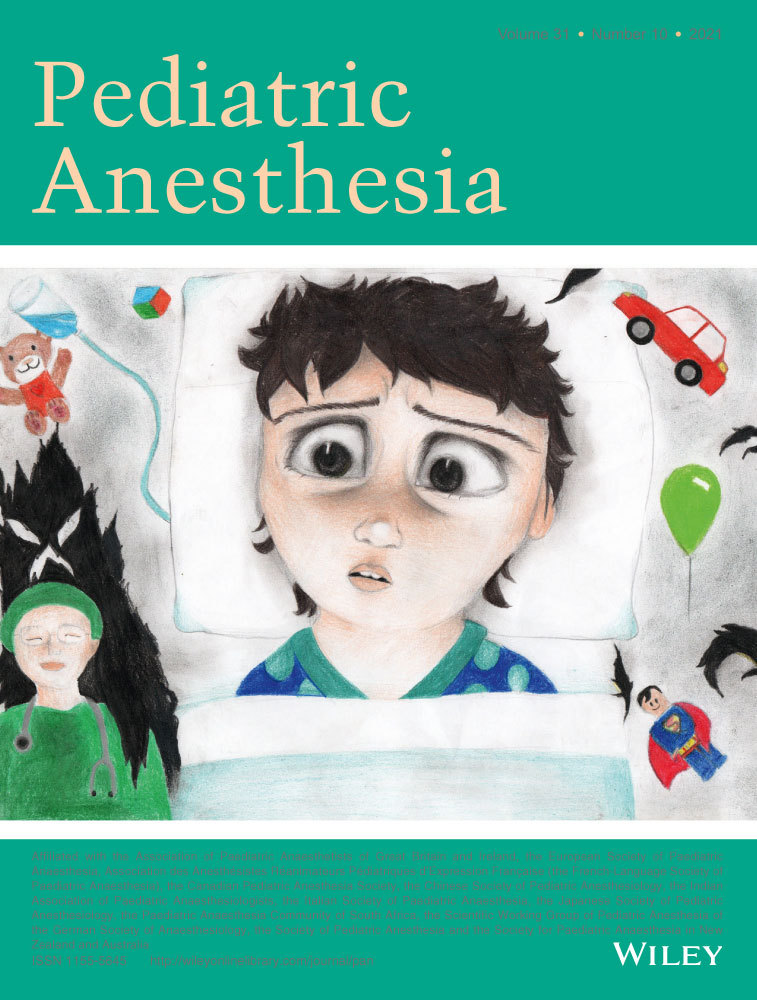Effects of erector spinae plane block on postoperative pain in children undergoing surgery: A systematic review and meta-analysis of randomized controlled trials
Correspondence
Yunxia Zuo, Department of Anesthesiology, West China Hospital, Sichuan University, Chengdu, Sichuan, China.
Email: [email protected]
Rong Luo and Xin Tong contribute equally to the work.
Funding information
This work was supported by the 1.3.5 project for disciplines of excellence, West China Hospital, Sichuan University (ZY2016101).
Abstract
Background
The erector spinae plane block is a novel regional anesthetic technique that is gaining popularity in pediatrics. However, the efficacy of erector spinae plane block in children is unclear. The aim of the systematic review and meta-analysis was to investigate effects of erector spinae plane block on postoperative pain relief in children.
Methods
We searched MEDLINE, Cochrane Library, EMBASE, China National Knowledge Infrastructure, and Wan fang databases for randomized controlled trials that compared erector spinae plane block with no block or other types of block in pediatric patients undergoing surgeries. The primary outcomes were pain intensity at rest within 24 h postoperatively and the number of patients requiring rescue analgesics. Data were analyzed using the fixed- or random-effects model, depending on whether the heterogeneity tested by the I2 statistic was >30%. We assessed the quality of evidence for the outcomes using the Grading of Recommendations, Assessment, Development, and Evaluation method.
Results
Seven randomized controlled trials involving 379 patients were reviewed. Compared with no block, erector spinae plane block slightly reduced the pain scores at 0 h (standardized mean difference [SMD]: −1.07; 95% confidence interval [CI]: −1.60 to −0.54; I2 = 52%), 6 h (SMD: −0.82; 95% CI: −1.39 to −0.25; I2 = 79%) postoperatively at rest and significantly reduced the need for rescue analgesics (odds ratio 0.09; 95% CI: 0.04 to 0.21; I2 = 16%). One trial demonstrated the analgesic effect of erector spinae plane block was similar to a quadratus lumborum block, while another trial demonstrated the analgesic effect of ESPB was superior to an ilioinguinal nerve block.
Conclusions
This review provides low-quality evidence that erector spinae plane block exhibits superior analgesia compared to no block in children. Due to the limited data, evidence regarding the comparison with other regional blocks remains unclear. Future large-sized and well-designed randomized controlled trials are needed.
CONFLICT OF INTEREST
The authors declare no conflicts of interest.
Open Research
DATA AVAILABILITY STATEMENT
Data sharing not applicable—no new data generated.




